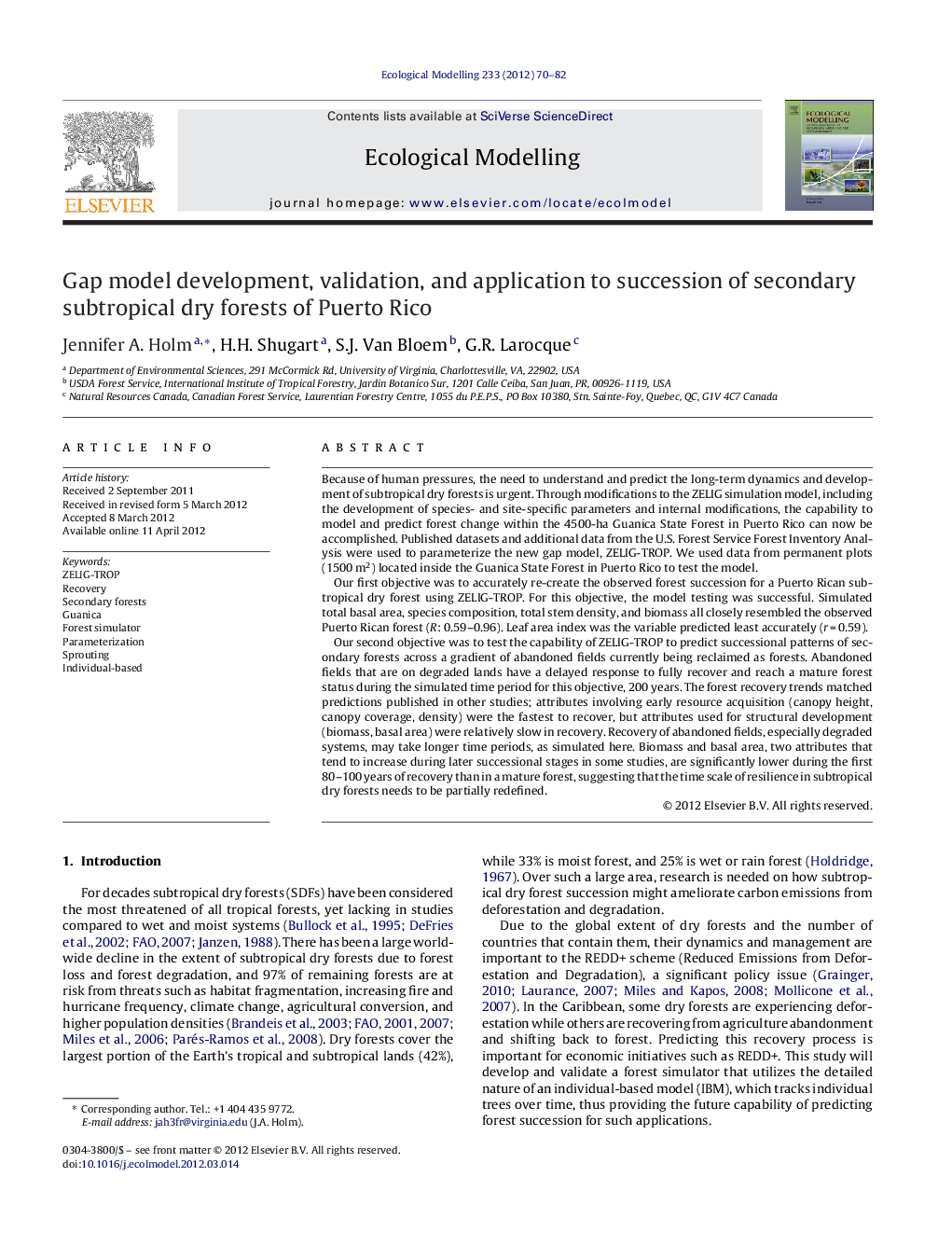| کد مقاله | کد نشریه | سال انتشار | مقاله انگلیسی | نسخه تمام متن |
|---|---|---|---|---|
| 4376483 | 1617510 | 2012 | 13 صفحه PDF | دانلود رایگان |

Because of human pressures, the need to understand and predict the long-term dynamics and development of subtropical dry forests is urgent. Through modifications to the ZELIG simulation model, including the development of species- and site-specific parameters and internal modifications, the capability to model and predict forest change within the 4500-ha Guanica State Forest in Puerto Rico can now be accomplished. Published datasets and additional data from the U.S. Forest Service Forest Inventory Analysis were used to parameterize the new gap model, ZELIG-TROP. We used data from permanent plots (1500 m2) located inside the Guanica State Forest in Puerto Rico to test the model.Our first objective was to accurately re-create the observed forest succession for a Puerto Rican subtropical dry forest using ZELIG-TROP. For this objective, the model testing was successful. Simulated total basal area, species composition, total stem density, and biomass all closely resembled the observed Puerto Rican forest (R: 0.59–0.96). Leaf area index was the variable predicted least accurately (r = 0.59).Our second objective was to test the capability of ZELIG-TROP to predict successional patterns of secondary forests across a gradient of abandoned fields currently being reclaimed as forests. Abandoned fields that are on degraded lands have a delayed response to fully recover and reach a mature forest status during the simulated time period for this objective, 200 years. The forest recovery trends matched predictions published in other studies; attributes involving early resource acquisition (canopy height, canopy coverage, density) were the fastest to recover, but attributes used for structural development (biomass, basal area) were relatively slow in recovery. Recovery of abandoned fields, especially degraded systems, may take longer time periods, as simulated here. Biomass and basal area, two attributes that tend to increase during later successional stages in some studies, are significantly lower during the first 80–100 years of recovery than in a mature forest, suggesting that the time scale of resilience in subtropical dry forests needs to be partially redefined.
► We developed the new gap model ZELIG-TROP to simulate a dry tropical forest.
► ZELIG-TROP was parameterized with species and site/environmental specific data.
► A match between six simulated forest attributes and field data was successful.
► Recovery abandoned fields can take 100–200 years to reach a mature forest status.
► A longer duration of time is needed for forest resilience in dry secondary forests.
Journal: Ecological Modelling - Volume 233, 24 May 2012, Pages 70–82